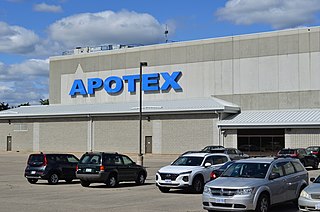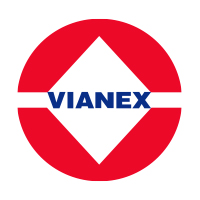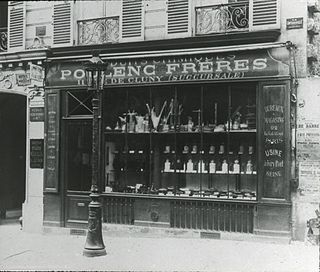Zambon & Co. And the Second World War
In 1937, Gaetano Zambon and Silvio Farina were appointed Knights of the Order of the Crown of Italy and in 1938, after the departure of Teodorico from the company, they formed Zambon & C. Società Anonima per Azioni (Zambon & Co. Join Stock Company), and increasing the number of employees from 100 to 300 within a decade. During the Second World War, the factory suffered heavy bombing on 14 May 1944 and much of it was destroyed. The new Zambon plant was opened in September 1946, with the Minister of Foreign Trade, Pietro Campilli in attendance. Pharmaceuticals produced by Zambon were also sold abroad.
After the Second World War, the first generation of Zambon partners decided to hand over the reins to the younger generation. After parting ways with the Farina branch in 1951 and the Ferraris in 1957, Alberto Zambon took over the management of the company. Gaetano Zambon died in 1959 at the age of 81 years, and the company changed its name once more to Zambon SpA.
Alberto Zambon established good relationships in the United States and with a few large multinationals existing at that time, especially in the field of research, so that the company could develop its own pharmaceuticals rather than licensing them.
Internationalisation
The company expanded abroad, setting up both production facilities and commercial operations. They opened the first production plant in Brazil in 1956 under the name Zambon Laboratorios Farmaceuticos SA, which was changed to Ltda in 1993.
Zambon SA was established in Barcelona, Spain, in 1960 to serve the Iberian Peninsula (an independent Portuguese headquarters was opened in Lisbon, in 1992). The main brand of Zambon on the Spanish market is Ultra Levura, a probiotic treatment.
In 1961, Alberto Zambon moved the main headquarters and research laboratories to Bresso, Milan, while the production facility remained in Vicenza.
In 1963, Inpharzam was founded in Lamone, Switzerland, which served as a holding group for all the international businesses. This branch later moved to Cadempino, where a specialist pharmaceutical production plant was established. Davizam SA, Siphar and the Inpharzam Trading Company SA were also established in Lugano.
Founded in the same year, Zambon France focused on sales and exports to Africa and Australia.
Fluimicil went on the market in 1965. During this period, the company started to build relationships in Japan through a collaboration with EISAI, which produced injectable chloramphenicol in Japan.
A new chemical ingredients plant was built in Almisano di Lonigo in 1970.
In 1975, Zambon Colombia SA was established with headquarters in Bogota.
In 1980, Inpharzam International established relationships with various companies, including Carlo Erba.
In 1983, Zambon bought out Emilio Ghirardi’s company Simes and production was moved to a new plant in Vicenza in 1984. That same year, Zambon B.V. was founded with headquarters in Amsterdam and Zambon Nederland BV was established.
A year later, Alberto Zambon was appointed a Knight of the Order of Merit for Labour, exactly 50 years after his father’s nomination.
1989 saw the founding of both Zambon UK and Zambon Corporation for the American market.
In 1996, the Shantou Shanning Zambon Chemicals Ltd (Equity Joint Venture) was founded and its plant was opened a year later.
In Europe, Inpharzam SA was established in Belgium in 1995.
In 2000, a second Chinese plant was opened in Hainan, dividing chemical and pharmaceutical production between Shantou and Hainan. In 2002 Zambon India was established and Zambon Indonesia two years later.
The group invested in the respiratory field, especially in the treatment of severe diseases such as chronic obstructive pulmonary disease and rare illnesses, and in June 2013, Zambon acquired Profile Pharma in the United Kingdom, which specialised in cystic fibrosis. At the same time, Zambon entered the central nervous system therapy area with the molecule safinamide.












